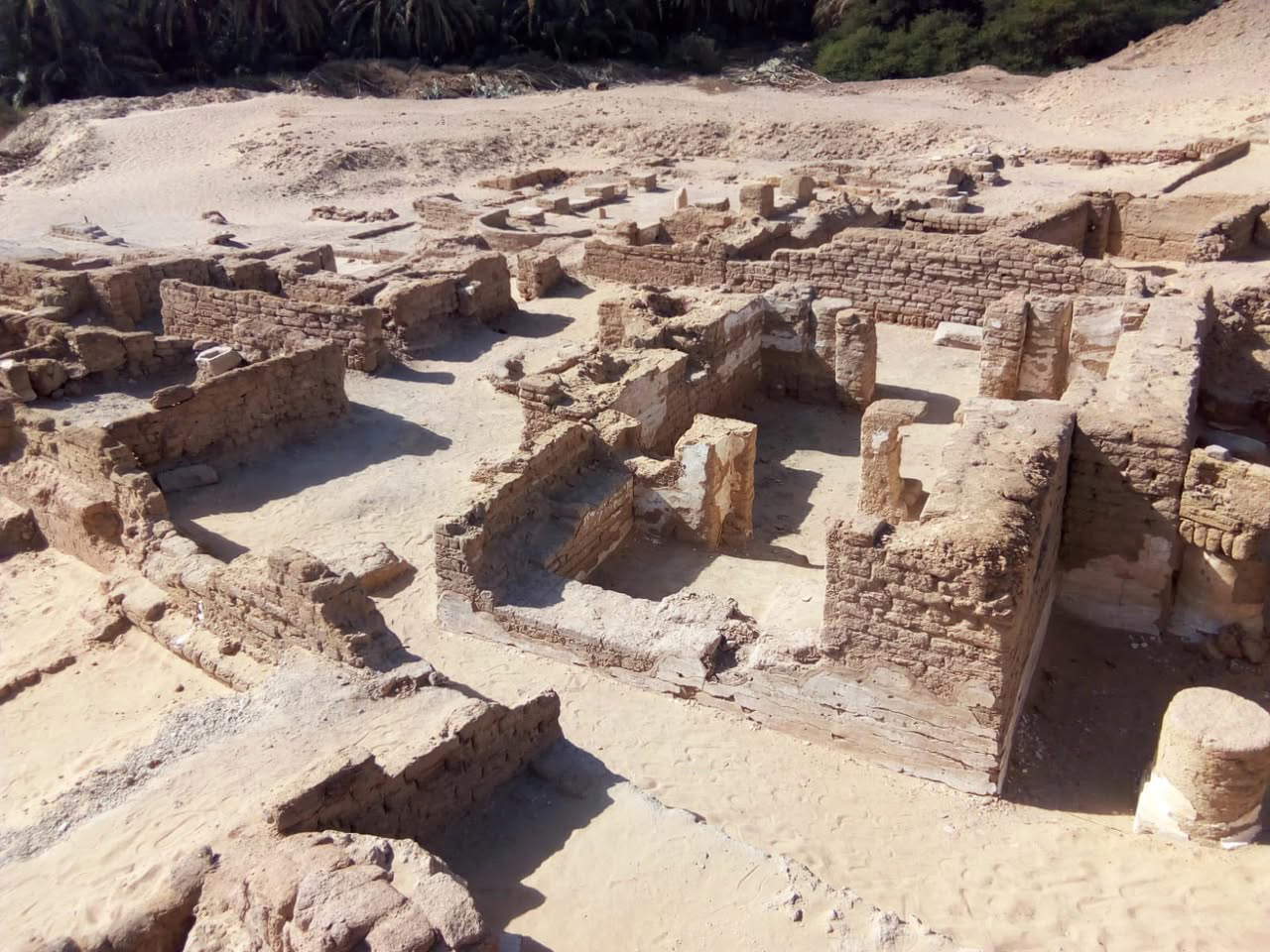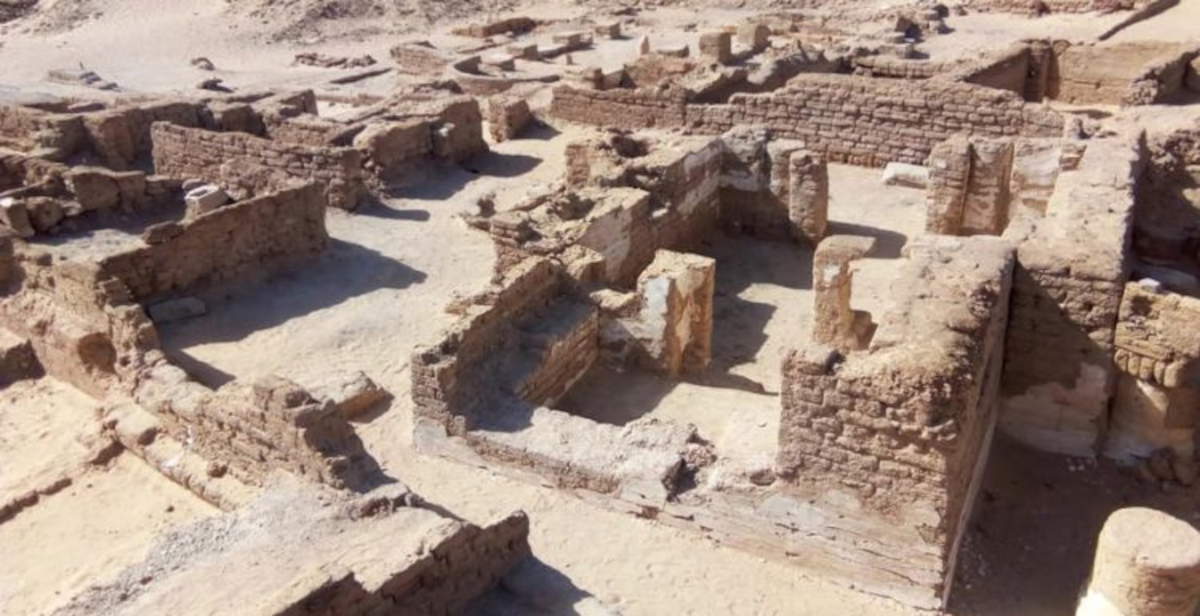A new archaeological discovery sheds light on the early stages of the spread of Christianity in Egypt. The Egyptian Supreme Council of Antiquities’ mission, operating in the Ain al-Kharab region, part of the Coptic and Islamic Oasis open-air area in the New Valley, has unearthed the remains of what was the main residential city in the Outer Oasis at the beginning of the Coptic era. The site documents the transition from paganism to the new Christian religion, bearing witness to a crucial period in the country’s religious and cultural history.
The announcement was made July 24 by Egypt’s Ministry of Tourism and Antiquities. Minister Sharif Fathi stressed the historical significance of the discovery, calling it a demonstration of the richness and variety of Egyptian civilization over the centuries. According to Fathi, the find strengthens the understanding of the period of religious transition, helping to highlight Egypt’s complexity and cultural plurality.
Items unearthed from the excavation include residential buildings, churches and burials, as well as a variety of everyday artifacts. Of particular note is the discovery of a mural depicting Jesus Christ in the act of healing a sick person. An image that, according to the Supreme Council of Antiquities, assumes documentary value, helping to outline the spiritual and iconographic profile of the early Christian communities in the area. Mohamed Ismail Khaled, secretary general of the Supreme Council of Archaeology, highlighted the importance of the discovery in the historical context of Al-Khara Oasis. According to him, the find marks a milestone in our knowledge of the beginning of the Coptic era in Egypt, reaffirming the central role of the Western Egyptian Oasis as a hub of religious and social life spanned by many eras.

According to archaeologists, the mission identified the remains of an entire city consisting of dwellings built of mudbrick, some of which still retain tile-covered walls. Areas identified include service areas equipped with domestic ovens, a series of brick ducts, and large ceramic containers embedded in the ground, presumably used for storing grain and foodstuffs. The site also yielded numerous artifacts, including fragments of pottery, glass, stone and ostraka, testifying to the daily life of the inhabitants.
One of the most important discoveries involves the remains of two churches. The first, built in the basilica style with mud bricks, is notable for its breadth. Archaeologists have found stone foundations and identified a large central nave flanked by two side aisles, separated by three square columns on each side. To the south of the sacred building extends an area attributed to service structures.
The second church, smaller in size and rectangular in plan, is surrounded by the remains of seven perimeter columns. Some of the interior walls preserve inscriptions in the Coptic language, an element that helps attribute the structure to the early Christian period. On the western side, the remains of buildings functional to the life of the ecclesiastical complex have also emerged. Director General of Antiquities Soham Ismail, who headed the mission, specified that the area shows evidence of continuity of use through different historical periods. In fact, some of the buildings unearthed date back to the Roman period but are later found to have been reused in Coptic times and later during Islamic rule as well. A stratification that testifies to the long vitality of the site and its strategic function over time.
The discovery is part of the project to enhance the archaeological heritage of the country’s less central areas. The Oasis of Ain al-Kharab, located in the New Valley, represents one of those areas where research can still return large portions of untold history, documenting moments of religious and social transition that profoundly marked the face of Egypt.
 |
| Egypt, ruins of a Coptic city discovered in Ain al-Kharab Oasis |
Warning: the translation into English of the original Italian article was created using automatic tools. We undertake to review all articles, but we do not guarantee the total absence of inaccuracies in the translation due to the program. You can find the original by clicking on the ITA button. If you find any mistake,please contact us.